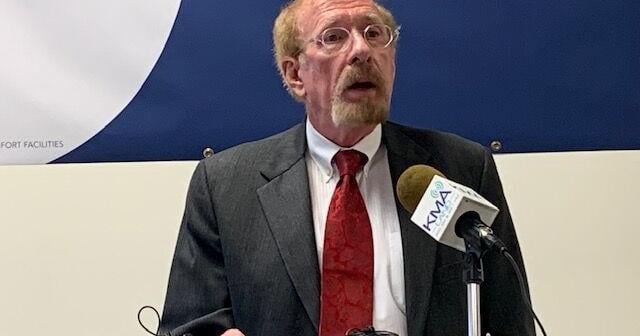(Omaha) — One of KMAland’s leading indicators painted a slightly improved picture for the Midwest economy.
June’s Creighton University Mid-American Business Index jumped back above growth neutral to 51.3 from May’s 48.2. It’s just the third time in 2024 that the rating has been above growth neutral, represented by a reading of 50.0. Creighton University Economics Professor Dr. Ernie Goss says that while the reading is a good sign, nearly 48% of supply managers from the survey’s nine-state region expect an economic downturn for the remainder of 2024.
“What we’re seeing is the up and down, vacillating around growth neutral, and that’s much like what we’re seeing in the national number as well,” said Goss. “It’s on the third time this year the reading has been above growth neutral, and even when it’s been above, it’s only been slightly above growth neutral. When it’s been below, it’s only slightly below growth neutral. So, it’s been an odd, odd year so far for 2024.”
Goss says one contributing factor to the uptick is the number of regional supply managers who have brought their purchasing from overseas back into the U.S. or “reshored” their purchasing.
“6% of the (surveyed) businesses have reshored all of their purchasing that was made abroad into the U.S. while 42% on the other hand have reshored a portion of purchasing from abroad,” Goss explained. “That’s almost half of course who’s purchasing from abroad, a portion of has been brought back to the U.S. That’s a good signal in terms of the supply chain purchasing.”
Another positive indicator is the wholesale price gauge for June dropped to 61.4 from 70.8 in May, indicating cooling inflationary pressures. However, Goss says employment numbers continue to disappoint. While June’s employment index increased slightly from May’s 43.7 to 44.0, it is the sixth straight month below growth neutral.
“What we have seen, when you look at the Bureau of Labor Statistics’ numbers, we’ve added about 1.8% in jobs over the last 12 months,” he said. “Now, that’s 1.8% of the total jobs–manufacturing jobs we’ve probably added nothing over the last 12 months and in fact they’re down.”
Goss added that the nine-state region has also lost 250,000 job openings over the past 12 months, a roughly 26% decline. As inflationary pressures appear to cool and the economy remains in flux, Goss expects the Federal Reserve to cut interest rates at its September meetings.
“Why are they cutting rates–not because they defeated inflation, but because the economy is weaking much too quickly,” said Goss. “The U.S. economy and the regional economy is much weaker than the Fed would like to see–they fear that more than they’re going to fear inflation.”
Other indicators from the survey showed the regional inventory index, reflecting levels of raw materials and supplies, expanding to 57.3 from May’s 55.6.














